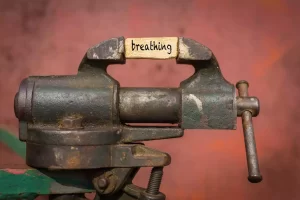
FROM THE CENTER OF THE BODY TOWARDS THE PERIPHERY
Home » More about the AEQ method and sports » FROM THE CENTER OF THE BODY TOWARDS THE PERIPHERY
The body’s structure, the shape of the pelvis, and the state of the strongest central muscles tell us that the body’s movement originates from the center of the body and spreads towards the periphery.
In clinical somatics, movement irregularities in the periphery (neck, elbows, shoulders, knees, feet…) are solved by working and learning the correct movements in the center of the body (hips, back, abdomen, and torso as a whole). Only when the control and feeling in the center of the body change do we focus on the periphery and eliminate the irregularity. All of these properly learned movements, however, must slowly transition into a movement pattern.
Usually, after changes in the center of the body and a better understanding of proper movement, most seemingly unsolvable problems on the periphery are significantly reduced or even disappear. Also, the kinesiology principle that small movements in the center of the body through levers such as arms and legs are transformed into large and fast movements tells how important the best control and feeling in the body center is. Because even the smallest irregularities can become large, which can be observed in the arms or legs movement, which we then try to eliminate by adjusting our equipment (shoes, bike, walking sticks, pedals, etc.). Considering the change felt in the center of the body contributes significantly to more effective movement in general, the less we injure ourselves, the less we lose energy, all of which cause inflammation and pain. Proper movements are rational, so we use much less force on them; the brain easily gets used to this way; our desires, goals, and needs will be realized without excessive force when moving.
Better awareness of oneself can also help with the correct spread and usage of our bodily energy. The energy that is made by the body and isn’t used for movement is negatively affecting our body’s systems, which can cause breakdowns and wear and lower our desire to move. This is also the source of the problems we usually attribute to overtraining, stress, and aging.
At the AEQ method, we follow the principle that function defines the structure. By observing the body shape or the length of the muscles and their attachment, the shape of the bones, and the joints’ shape and structure, we can very well determine the correctness of their function.
Function, movement patterns, reflexes, performing movements, and sensory-motor connections are strongly intertwined – codependent. Irregularities in sensory-motor connections appear due to sensory-motion amnesia, leading to a change in structure, which we later feel as pain or appears on x-ray scans. Usually, with the elimination of sensory-motion amnesia very quickly and without invasive interventions, the structure returns to the correct “normal” evolutionary state. The speed and possibility of returning to the correct state depend on the duration and amount of the structure’s change, but the change of the function always improves the state of the structure and thus the quality of life.







